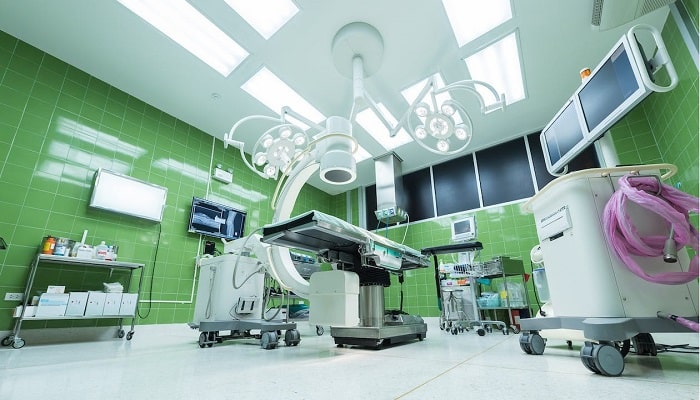In recent years, remote patient monitoring (RPM) has emerged as a game-changer in the healthcare industry. Thanks to this technology, hospitals can now extend their reach beyond their physical walls and provide continuous care to patients in the comfort of their homes.
According to Gitnux, over 23 million American patients sought RPM services in 2020. The technology received widespread attention during the COVID pandemic. Since then, people have become more welcoming to this trend.
To fully leverage the benefits of RPM, hospitals must implement efficient strategies that streamline the process and ensure seamless monitoring. In this article, we will explore some of the best ways hospitals can efficiently ensure remote patient monitoring.
Integrated Technology Platforms
A crucial aspect of efficient remote patient monitoring lies in the seamless integration of technology platforms. Hospitals should adopt comprehensive and user-friendly RPM systems that can easily interface with electronic health records (EHRs) and other hospital information systems.
A well-integrated platform allows healthcare providers to access real-time patient data, historical records, and diagnostic reports from a single interface. This helps eliminate the need for time-consuming data gathering from multiple sources.
Moreover, the RPM platform should offer interoperability with various medical devices such as wearables, sensors, and monitoring equipment. Such integration enables automatic data transmission from these devices to the patient’s electronic health record. This, in turn, eliminates the risk of manual data entry errors and saves valuable time for healthcare professionals.
Also, according to CoachCare, the right RPM software and systems can significantly increase your healthcare facility’s revenue. Integrating proper technology platforms with such RPM systems can also improve patient outcomes ensuring speed and efficiency.
Telehealth and Remote Consultations
Effective RPM is not just about gathering data. It also involves regular communication between healthcare providers and patients. Hospitals should leverage telehealth and remote consultation services to ensure ongoing engagement with patients under remote monitoring.
Video conferencing, instant messaging, or virtual care management provide an opportunity for physicians and nurses to monitor patients and address their concerns. They also allow them to answer questions and offer necessary guidance.
Regular virtual consultations not only enhance patient compliance but also enable healthcare professionals to make informed decisions based on patient feedback and symptoms. These interactions humanize the remote monitoring process, fostering trust and patient satisfaction.
Predictive Analytics and AI
Strategic Market Research reports that 80 percent of Americans support the use of RPM. A lot of this support is because RPM systems use patient data in the best way possible.
The power of artificial intelligence (AI) and predictive analytics can significantly enhance the efficiency of RPM in hospitals. Advanced algorithms can analyze large datasets generated by remote patient monitoring software, identifying trends, anomalies, and potential health risks. By leveraging AI, healthcare providers can predict adverse events and intervene proactively, preventing hospital readmissions and emergency visits.
Moreover, AI-driven algorithms can identify patterns in patient data and alert healthcare professionals when a patient’s condition deviates from the norm. These real-time monitoring and early warning systems enable timely interventions, leading to better health outcomes and reduced healthcare costs.
Remote Patient Education
Patient education is a crucial component of efficient remote patient monitoring. Hospitals should provide patients with comprehensive information on using monitoring devices, understanding their health data, and recognizing warning signs. Educated patients are more likely to participate actively in their care, leading to better self-management and treatment adherence.
Hospitals can use various mediums for patient education, such as online tutorials, instructional videos, and remote training sessions. Additionally, personalized educational materials can be tailored to each patient’s condition, ensuring that the information is relevant and easy to comprehend.
Wearable Technology and Sensors
Incorporating wearable technology and sensors is a key enabler of successful remote patient monitoring. These devices can continuously track vital signs, physical activity, and other relevant health metrics. Hospitals should partner with leading wearable technology companies or develop their own devices that are specifically designed for medical monitoring purposes.
Wearable devices offer several advantages, including improved patient comfort, continuous data collection, and reduced hospital visits. Patients can easily wear these devices at home, allowing healthcare providers to monitor their health status without disrupting their daily routines. Furthermore, the data obtained from wearables can provide valuable insights into a patient’s overall health trajectory. That, in turn, helps healthcare professionals adjust treatment plans accordingly.
Conclusion
Xtelligent Healthcare Media reports that RPM adoption spiked between 2019 and 2022. This shows how receptive people are to this technology. As hospitals and healthcare facilities ensure RPM efficiency keeping the above-mentioned points in mind, this technology is sure to gain more attention in the coming years.


















